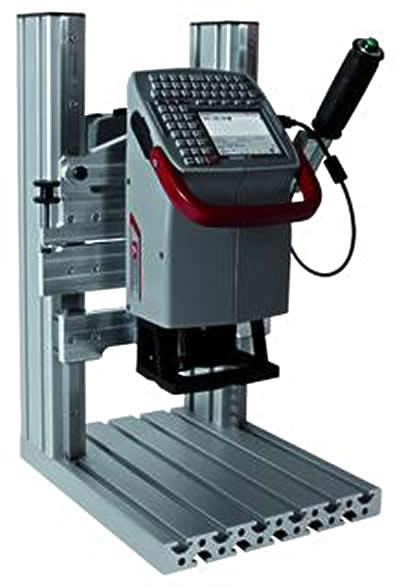
The FlyMarker mini, a battery operated hand-held dot peen marking system, weighs 2.7 kg and is designed for durable markings of big and unmovable work pieces directly on-site, according to the German company Markator, which produces industrial marking systems.
With the new, optional column frame, the company added, FlyMarker mini also is suitable to mark small workpieces or type plates. The mobile marking unit can fit into the column frame, and secured with a clamping lever. Smooth-running linear guides reportedly allow a quick adjustment of the marking pin distance.
Thanks to the T-slot base plate of the column frame, the FlyMarker mini reportedly makes it possible to mount the optional Markator type plate, as well as individual plates produced by the customer, to position the workpieces that need to be marked.
The portable marking system is capable of marking materials with a hardness of up to 63 HRC.
With two Lithium-Ion batteries integrated within the standard scope of supply, the FlyMarker mini's housing consists of glass fibre reinforced plastic and is said to be break resistant. The scanner is located on the front face of the marking unit. With the integrated barcode scanner, the FlyMarker mini also is capable of scanning 1D and 2D barcodes without need of external accessories, according to the company.
Contact Details
Related Glossary Terms
- hardness
hardness
Hardness is a measure of the resistance of a material to surface indentation or abrasion. There is no absolute scale for hardness. In order to express hardness quantitatively, each type of test has its own scale, which defines hardness. Indentation hardness obtained through static methods is measured by Brinell, Rockwell, Vickers and Knoop tests. Hardness without indentation is measured by a dynamic method, known as the Scleroscope test.
